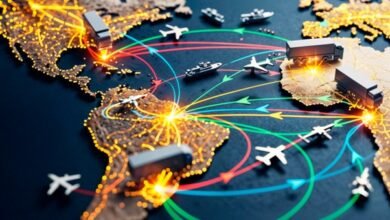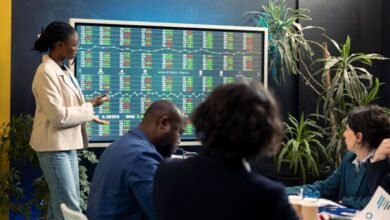Energy : an international coalition to electrify 300 million Africans by 2030
The World Bank, AfDB, and international partners are launching a program to raise $90 billion, aiming to electrify 300 million Africans by 2030 using green energy. Today, 600 million people on the continent still lack access to electricity. The challenges of electrification in Africa require massive investments to close this gap.

By the editorial staff
On September 20, the Rockefeller Foundation, the Global Alliance for People and Planet, and Sustainable Energy For All backed the initiative named « Mission 300. » Led by the World Bank and the African Development Bank (AfDB), this coalition aims to raise $90 billion to electrify 300 million people by 2030, focusing on clean energy solutions such as mini-grids.
With the help of public, private, and philanthropic funds, « Mission 300 » focuses on energy transition in a continent where 600 million people are deprived of electricity. The World Bank has already committed $25 billion, while the AfDB has pledged $5 billion. « We must redouble our efforts to reach $25 billion per year by 2030, » said Akinwumi Adesina, President of the AfDB.
A strong concentration of the non-electrified population in rural areas
The Rockefeller Foundation, which co-created GEAPP with the Bezos Earth Fund, will draw on its experience to support the 15 projects already launched in 11 African countries. This technical support will help structure energy projects and assist governments in their reforms.
The needs in terms of electrification in Africa remain immense. The continent’s population continues to grow rapidly, with energy demand rising accordingly. It is estimated that around 600 million people still lack access to electricity, according to the latest estimates from the World Bank. This represents nearly 43% of the continent’s population, with a strong concentration of this non-electrified population in rural areas. The challenges of electrification in Africa require massive investments to bridge this gap.
$25 billion per year to meet the challenge of electrification for all
The estimated cost to provide universal access to electricity in Africa by 2030 is around $25 billion per year, according to the International Energy Agency (IEA). This investment would be needed to finance energy infrastructure, modernize existing grids, and promote renewable energy solutions such as mini-grids and solar energy, suitable for rural and remote areas.
However, the challenges are numerous: often insufficient infrastructure, complex financing systems, and disparities between urban and rural areas. To overcome these obstacles, the new opportunities offered by green technologies, such as solar energy or mini-grids, are emerging as viable and sustainable solutions. These innovations meet energy needs while preserving the environment, offering the continent a unique chance to position itself as a leader in the transition to clean energy.
During the Africa50 General Assembly in Madagascar, Adesina expressed satisfaction with the increase in foreign direct investment in clean energy in Africa. Malagasy President Andry Rajoelina, for his part, emphasized that « Africa is not a problem, but a solution » when it comes to renewable energy. Madagascar also announced ambitious projects, such as « Ivolobe » and « Sahofika, » aimed at strengthening the country’s energy capacity.
Public-private partnerships and international financing
Several major initiatives have been launched to electrify Africa, with significant impacts in some regions. Among them is « Desert to Power, » led by the African Development Bank (AfDB), which aims to harness solar energy in the Sahel region to provide electricity to 250 million people, 90 million of whom through solar mini-grids. This project could generate 10 GW of solar energy by 2030.
Similarly, Power Africa, a program launched by the United States in 2013, aims to double access to electricity in sub-Saharan Africa. To date, it has helped provide 15 million electrical connections and has mobilized $20 billion in investments to support projects in several countries.
The World Bank’s Scaling Solar initiative also helps governments quickly develop large-scale solar power plants. This program has enabled countries like Senegal and Zambia to build solar plants that supply energy at reduced costs.
These initiatives have demonstrated that public-private partnerships and international financing can play a crucial role in improving energy access in Africa.
Learn more : Mission 300






